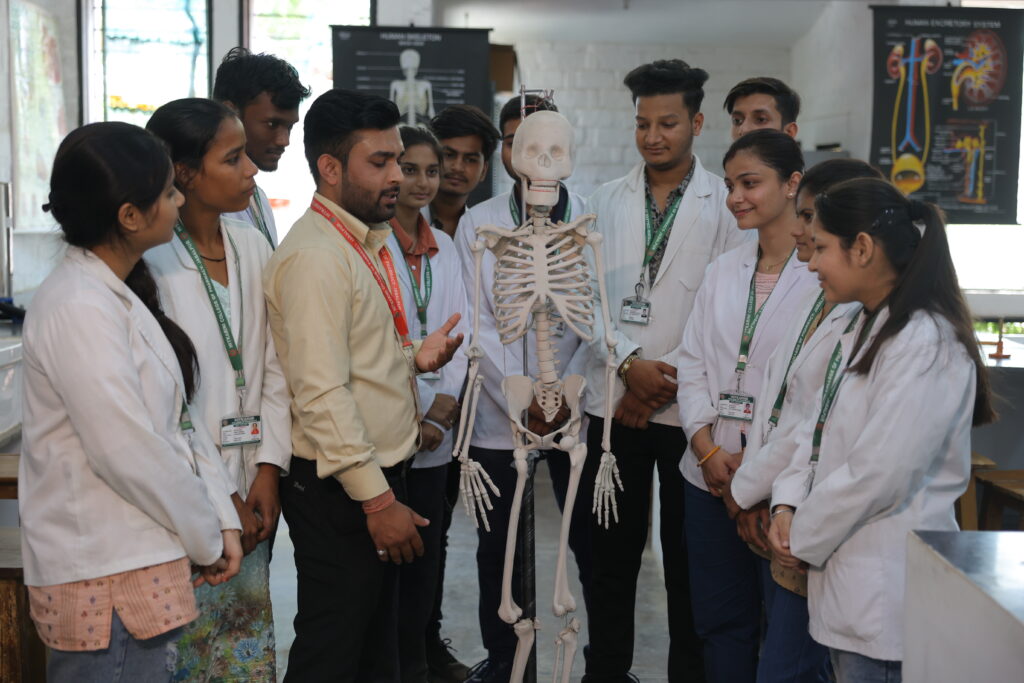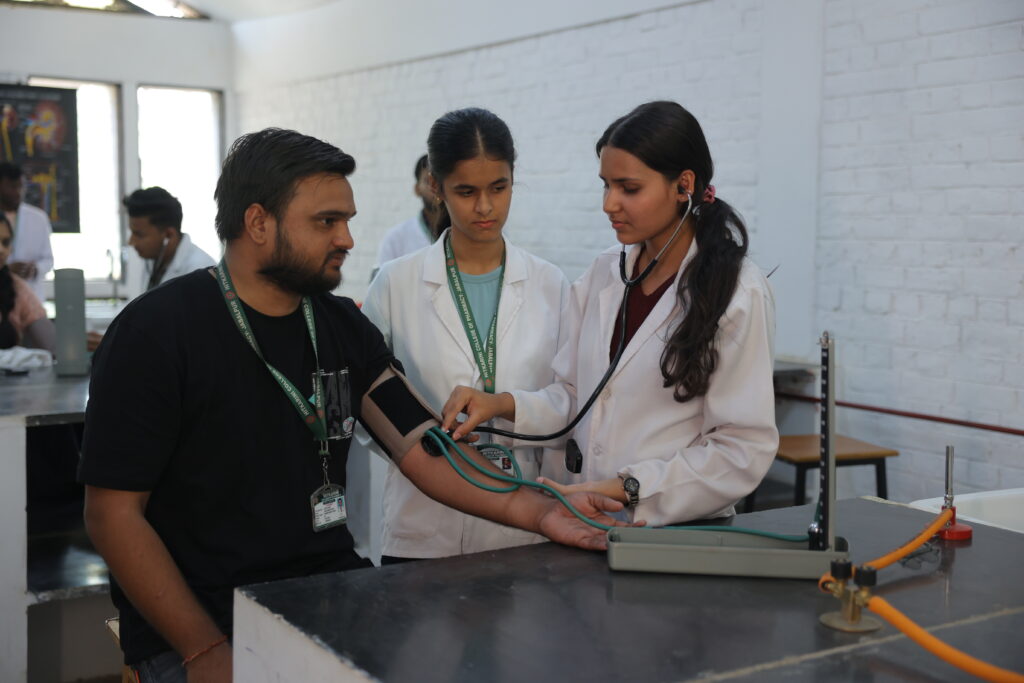HAP
The Human Anatomy and Physiology (HAP) Lab is designed to provide hands-on experience in understanding the structure and functions of the human body. It involves studying anatomical models, physiological experiments, and clinical assessments to explore various body systems.
Key Areas of Study in HAP Lab:
1. Anatomy (Structural Studies):
• Study of bones and skeletal system (models and real specimens).
• Examination of muscular system (major muscles and their functions).
• Observation of internal organs (heart, lungs, liver, kidneys, brain, etc.).
• Identification of tissues under a microscope (histology).
2. Physiology (Functional Studies):
• Blood analysis: Blood grouping, hemoglobin estimation, and RBC/WBC count.
• Cardiovascular system: Measuring blood pressure, heart rate, and ECG analysis.
• Respiratory system: Lung volumes and capacities (Spirometry).
• Nervous system: Reflex testing and sensory perception experiments.
• Digestive system: Salivary enzyme activity and digestion experiments.
• Urinary system: Urine analysis for pH, glucose, and proteins.



